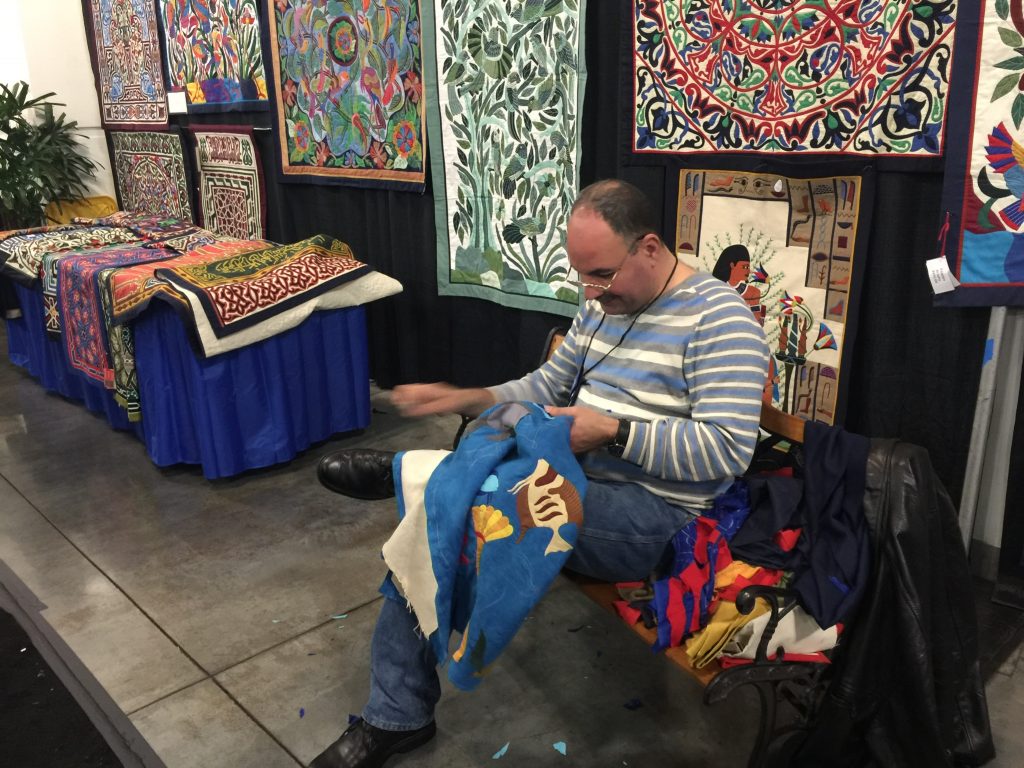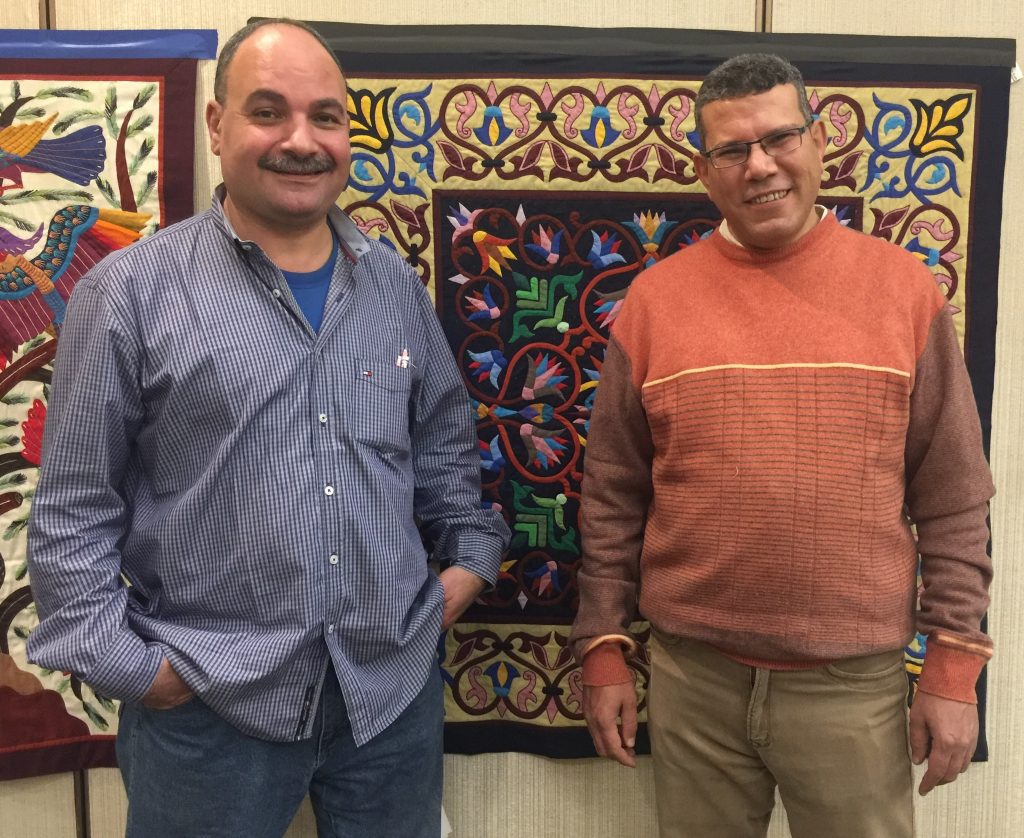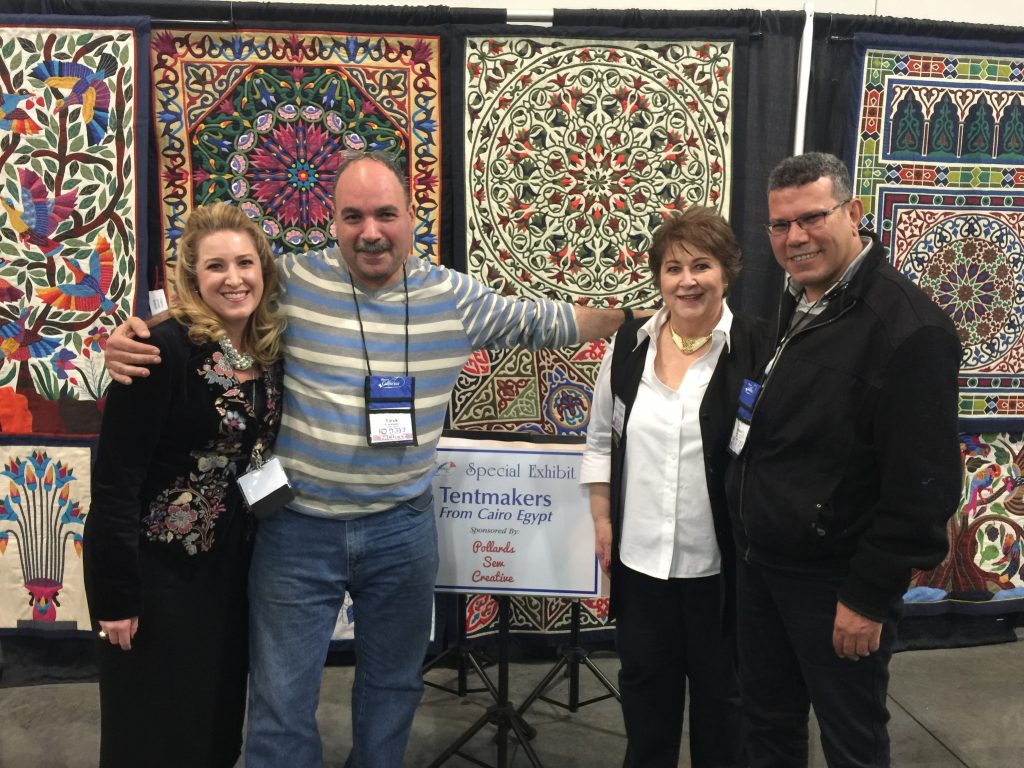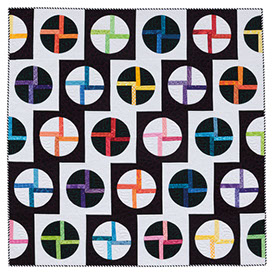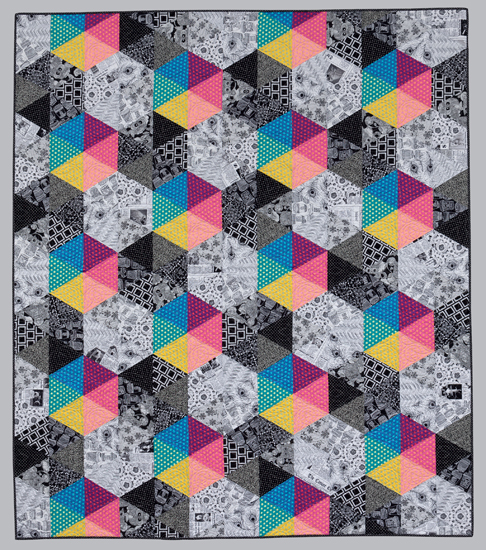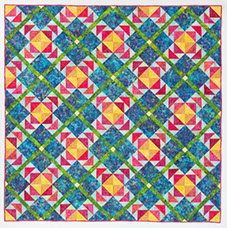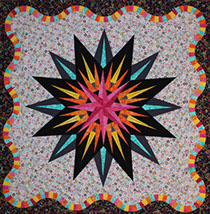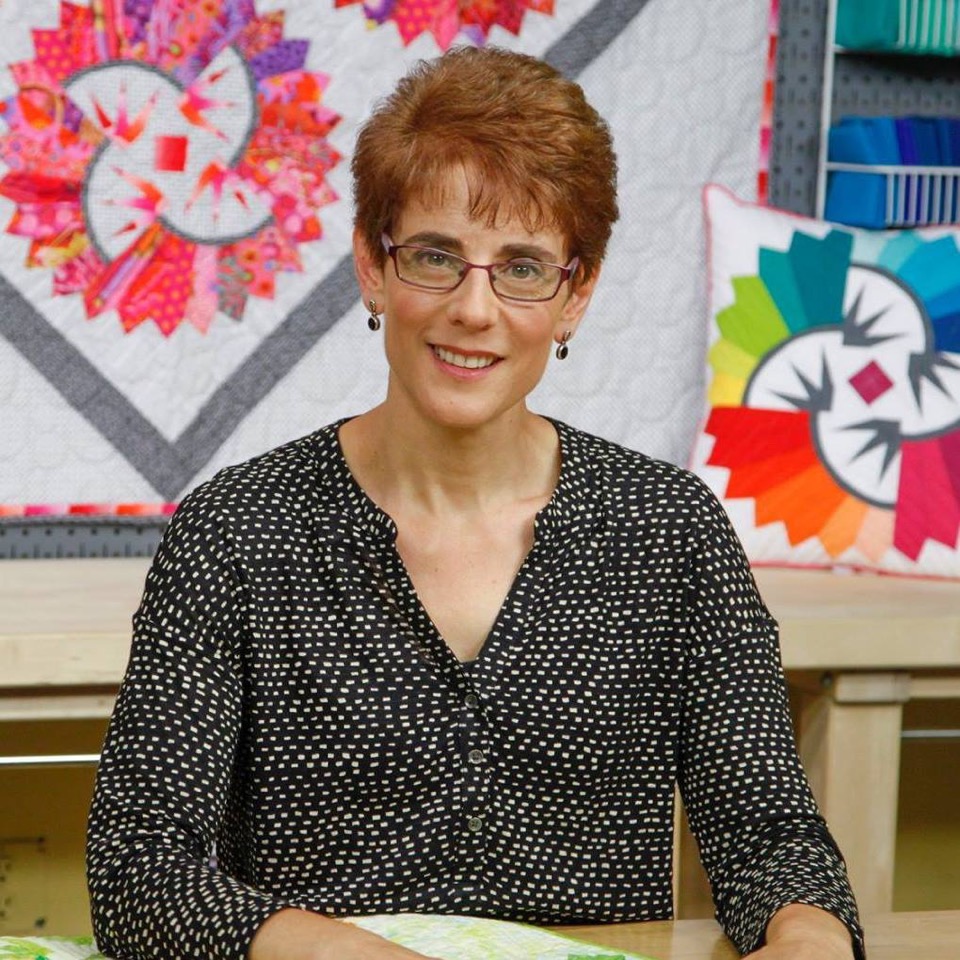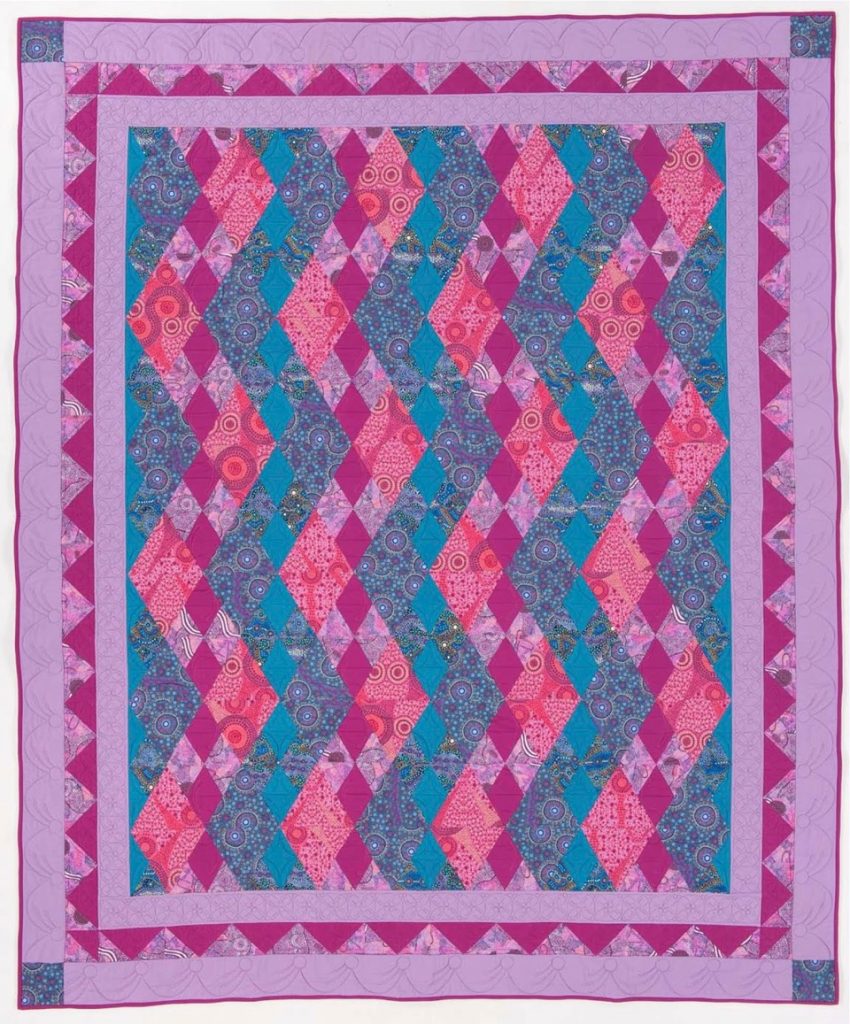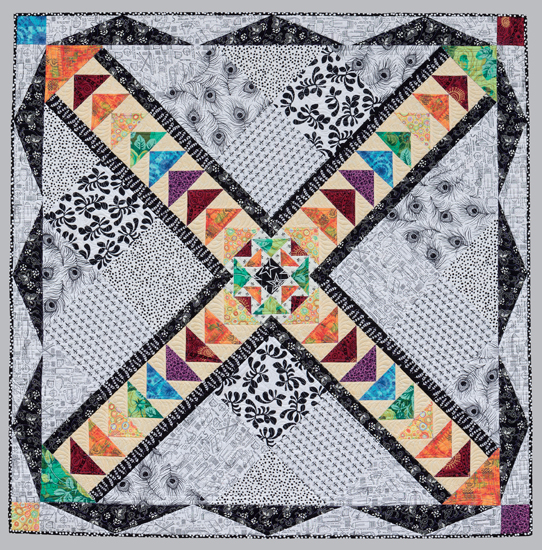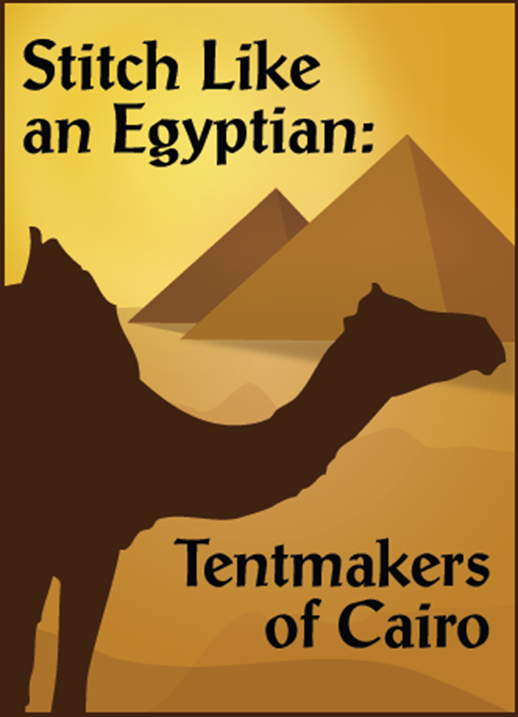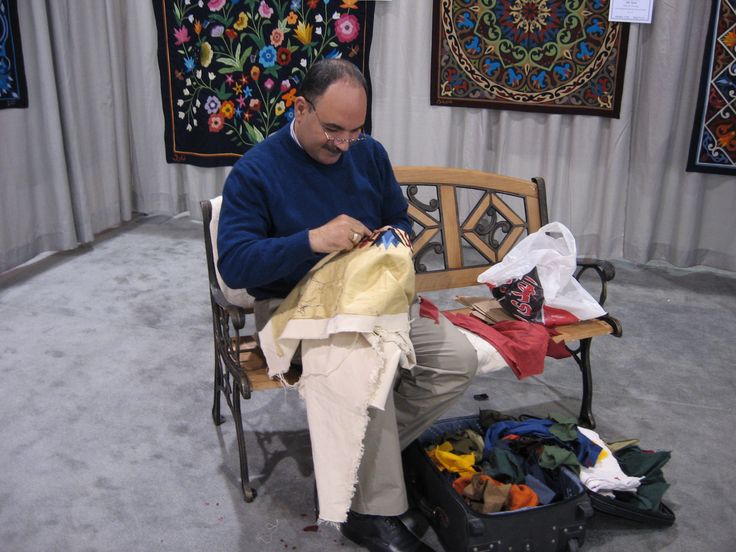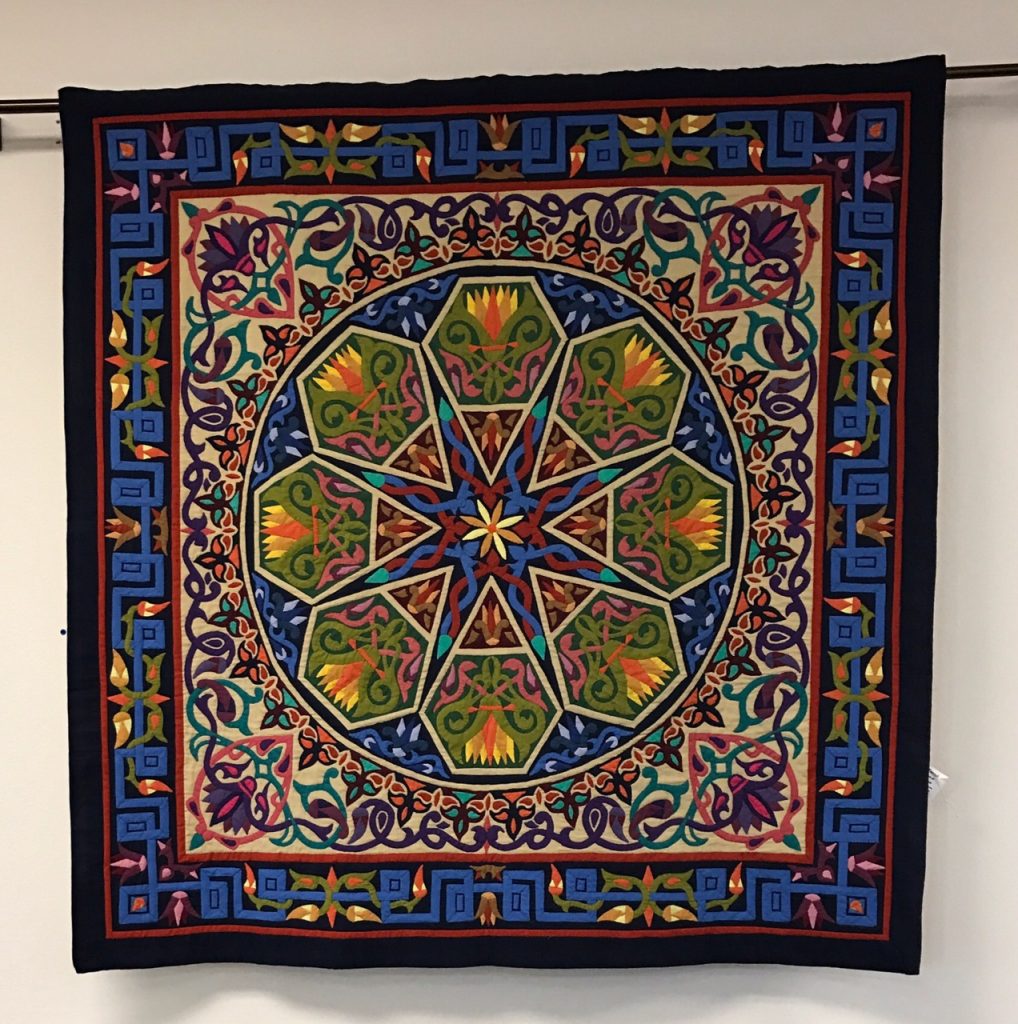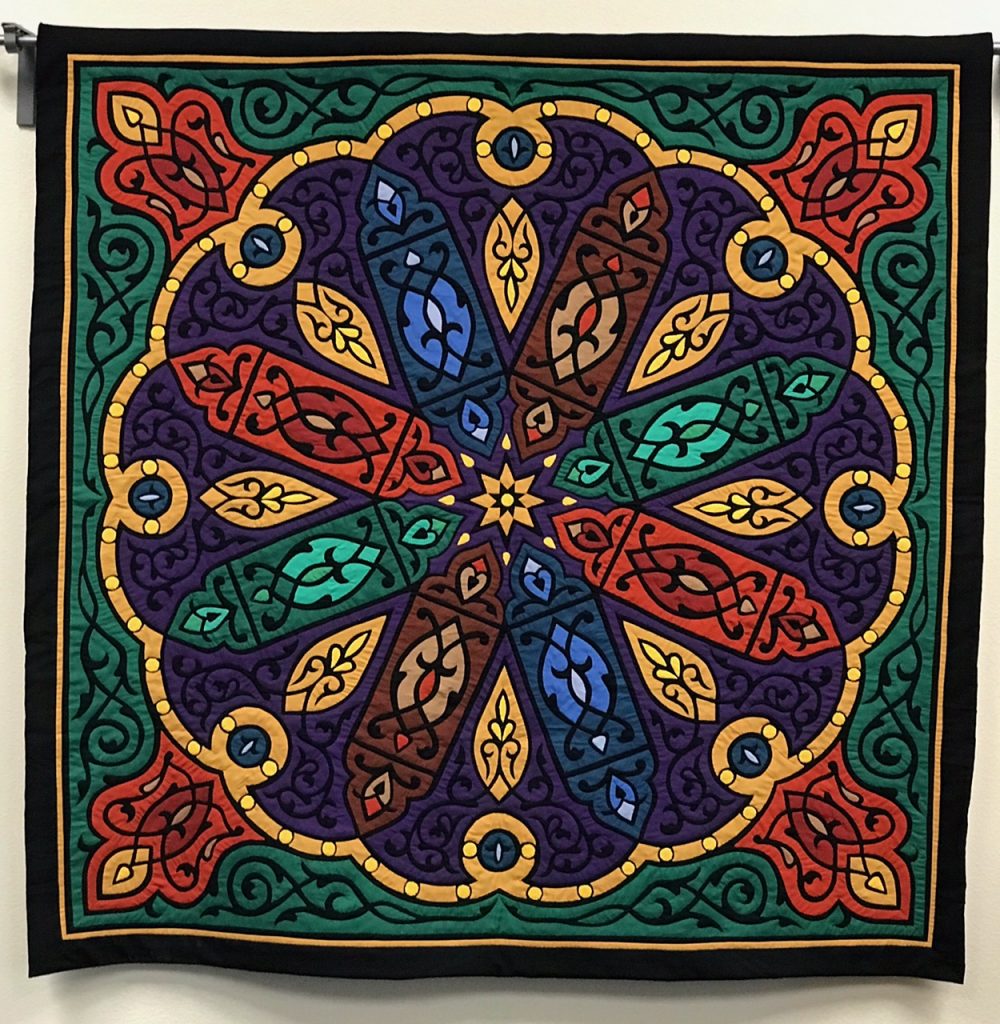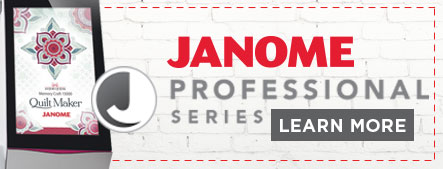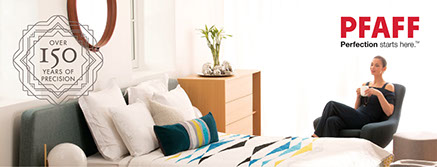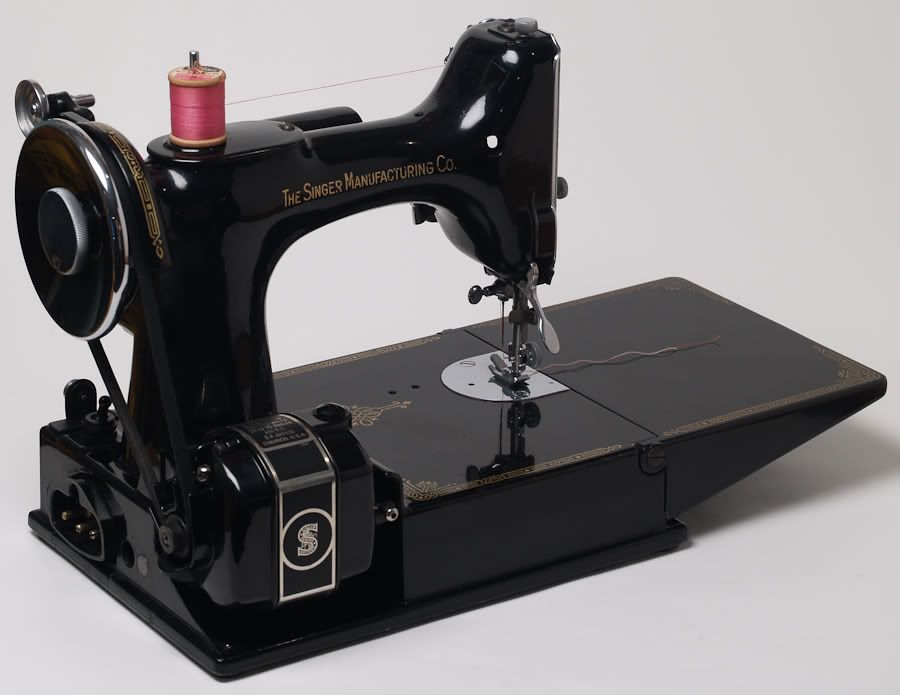 At Road 2017, Jennifer O’Brien from Sew Craft taught a $5.00 Lecture Class, Machine Quilting on your Featherweight. The first thing that the students learned was, yes, you can machine quilt using the small but mighty Featherweight. In fact, the principles are similar to any machine quilting project.
[caption id="attachment_4904" align="aligncenter" width="625"]
At Road 2017, Jennifer O’Brien from Sew Craft taught a $5.00 Lecture Class, Machine Quilting on your Featherweight. The first thing that the students learned was, yes, you can machine quilt using the small but mighty Featherweight. In fact, the principles are similar to any machine quilting project.
[caption id="attachment_4904" align="aligncenter" width="625"]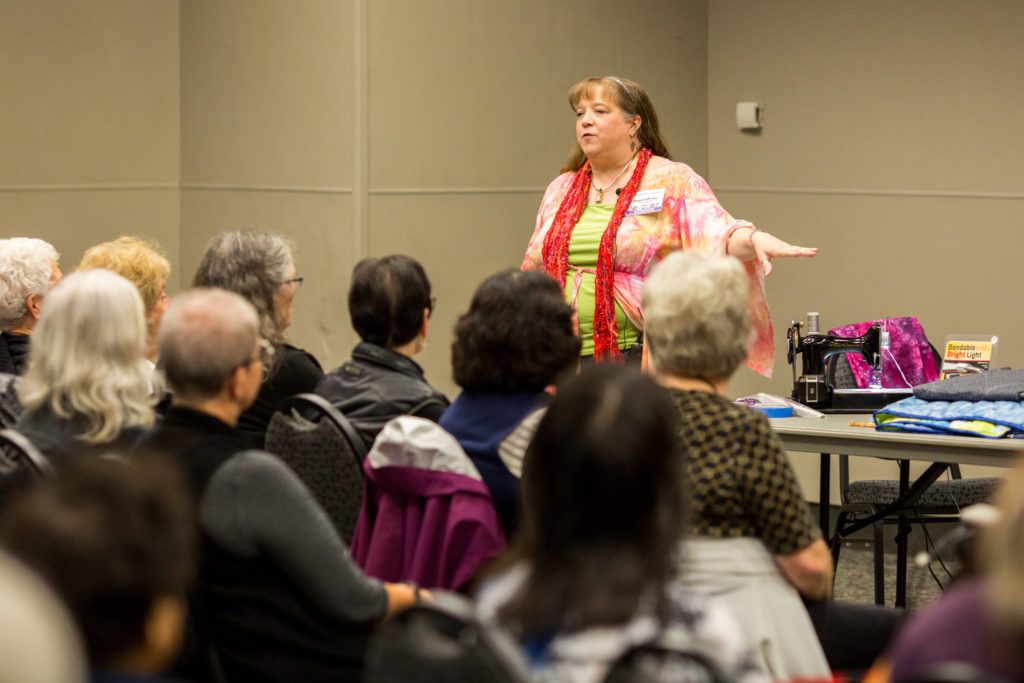 Photo by Brian Roberts Photography[/caption]
In order to do free-motion machine quilting, there has to be free movement. Because the feed dogs on a Featherweight cannot be lowered, they need to be covered up so the fabric can move smoothly for quilting. Jennifer suggested using a Teflon pressing sheet cut the size of the arm of the Featherweight and secured to the machine using either masking tape or 404 adhesive spray. She also advised to cut a small triangle hole in the area where the needle goes in and out to avoid having the needle rub against the Teflon.
Another adjustment to the Featherweight for machine quilting is trading out the pressure foot for a machine quilting pressure foot. She recommends a “big foot” because it has an oversize, clear foot.
To start quilting on a Featherweight, start from the center of the project. With the pressure foot raised, put the material under the pressure foot then lower the needle down and up one time so that the bobbin thread just pops up. Pull the bobbin thread up to the top to prevent it from bunching up underneath the fabric. Once the thread has been secured on top, lower the pressure foot and begin gliding the material to free motion quilt the material.
Jennifer made a video to demonstrate these starting tips:
Because the sewing area of a Featherweight is limited, Jennifer cautioned that handling the fabric can be tedious. She recommended putting a table to the side of the sewing area to handle the weight of the fabric.
[caption id="attachment_4907" align="aligncenter" width="440"]
Photo by Brian Roberts Photography[/caption]
In order to do free-motion machine quilting, there has to be free movement. Because the feed dogs on a Featherweight cannot be lowered, they need to be covered up so the fabric can move smoothly for quilting. Jennifer suggested using a Teflon pressing sheet cut the size of the arm of the Featherweight and secured to the machine using either masking tape or 404 adhesive spray. She also advised to cut a small triangle hole in the area where the needle goes in and out to avoid having the needle rub against the Teflon.
Another adjustment to the Featherweight for machine quilting is trading out the pressure foot for a machine quilting pressure foot. She recommends a “big foot” because it has an oversize, clear foot.
To start quilting on a Featherweight, start from the center of the project. With the pressure foot raised, put the material under the pressure foot then lower the needle down and up one time so that the bobbin thread just pops up. Pull the bobbin thread up to the top to prevent it from bunching up underneath the fabric. Once the thread has been secured on top, lower the pressure foot and begin gliding the material to free motion quilt the material.
Jennifer made a video to demonstrate these starting tips:
Because the sewing area of a Featherweight is limited, Jennifer cautioned that handling the fabric can be tedious. She recommended putting a table to the side of the sewing area to handle the weight of the fabric.
[caption id="attachment_4907" align="aligncenter" width="440"]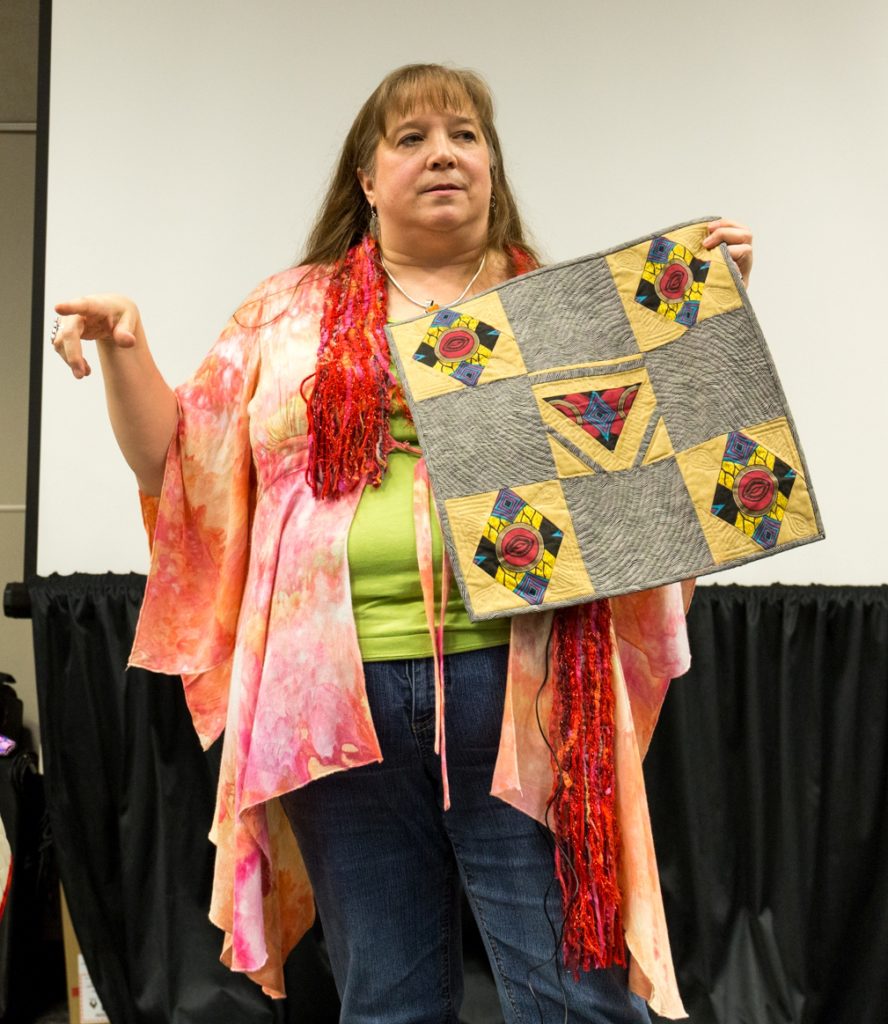 Photo by Brian Roberts Photography[/caption]
As with all quilting, Jennifer said that Featherweight machine quilting takes practice, especially moving the fabric under the machine. She mentioned that quilting curves is easier than “stitch in a ditch” with a Featherweight. Jennifer suggested that the best way to practice is to make loops, L’s and C’s and even writing your name. Her final advice was to start small to encourage completing projects, pace yourself and don’t hurry.
Photo by Brian Roberts Photography[/caption]
As with all quilting, Jennifer said that Featherweight machine quilting takes practice, especially moving the fabric under the machine. She mentioned that quilting curves is easier than “stitch in a ditch” with a Featherweight. Jennifer suggested that the best way to practice is to make loops, L’s and C’s and even writing your name. Her final advice was to start small to encourage completing projects, pace yourself and don’t hurry.
Archive for the ‘classes’ Category
Machine Quilting On A Featherweight
Thursday, May 4th, 2017Tips For Preserving Quilts
Friday, March 17th, 2017 Retro Clean, presented a $5.00 Lecture at Road to California 2017 on how to effectively care for and preserve quilts.
[caption id="attachment_4799" align="aligncenter" width="625"]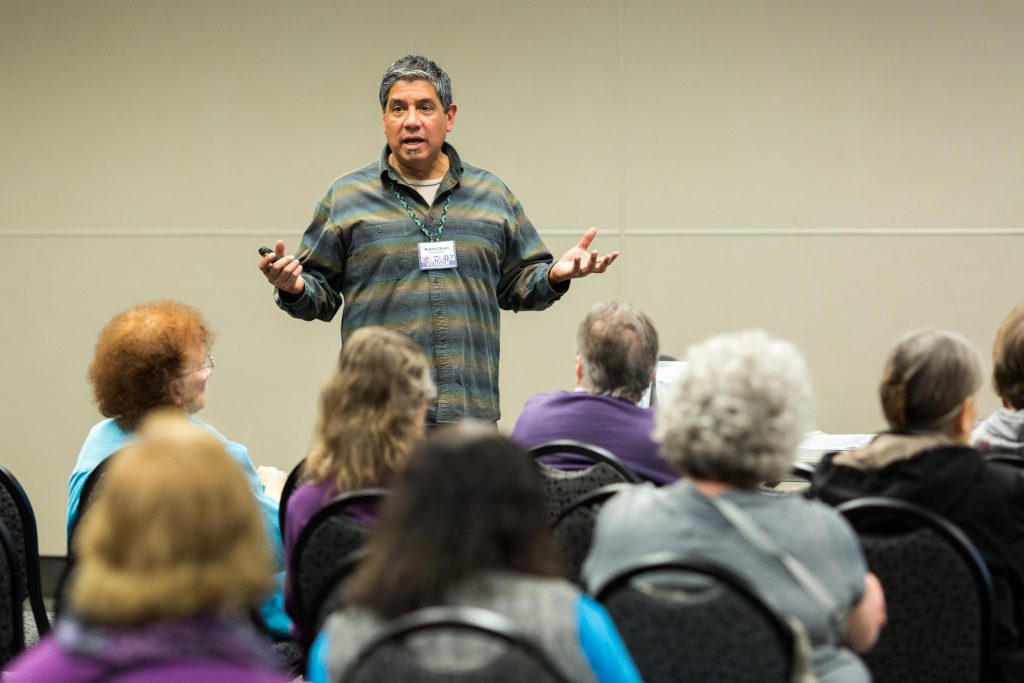 Photo by Brian Roberts Photography[/caption]
Retro Clean is a gentle soaking agent designed to safely remove yellow age stains (including mildew, wood oil, tea, coffee, blood, water damage and perspiration stains) from vintage quilts and all washable fabrics.
Photo by Brian Roberts Photography[/caption]
Retro Clean is a gentle soaking agent designed to safely remove yellow age stains (including mildew, wood oil, tea, coffee, blood, water damage and perspiration stains) from vintage quilts and all washable fabrics. In testing and selling this product along with Retro Wash, an everyday, general cleaning product, Larry has learned a lot about what to do and not do when it comes to taking care of vintage fabrics and quilts. He shared some really good tips:
In testing and selling this product along with Retro Wash, an everyday, general cleaning product, Larry has learned a lot about what to do and not do when it comes to taking care of vintage fabrics and quilts. He shared some really good tips:
Laundering
When working with a large quilt, it’s best to line your bathtub with a bedsheet, then fill with water and a delicate cleaning agent (like Retro Wash). Wash and rinse the quilt (without twisting or wringing), then gently push the water out of the material. Using the sheet “sling”, lift the quilt out of the tub. Roll the quilt in towels to get out any excess moisture, then lay out to dry.
Never put a damp quilt in the dryer or especially on a line to dry, as you may disfigure it. Instead, lie it flat on a sheet on the grass in the sun. To protect from sun or bird damage, lay another sheet over the top of the quilt.
Hanging
An average quilt can hang for years if done properly. Never tack or nail a quilt to a wall. Some wood rods seep oil and acids which over time will stain the quilt. To avoid this, seal the wood rod with polyurethane varnish before hanging. Another alternative is to use invisible, magnetic quilt hangers or attach Velcro to a cotton sleeve basted across the back of the quilt. [caption id="attachment_4798" align="aligncenter" width="467"]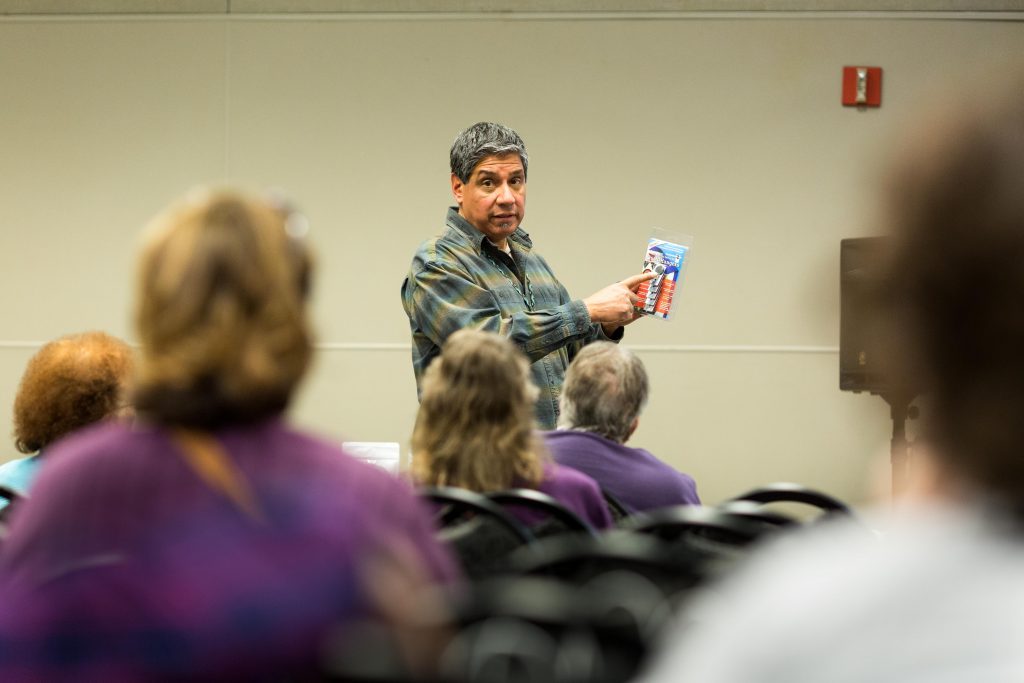 Photo by Brian Roberts Photography[/caption]
Photo by Brian Roberts Photography[/caption]
Because hanging is not a natural position for quilts, Larry suggested taking them down quarterly and laying them flat so that they can breathe.
Storing
Acid-Free tissue paper or Tyvek (a synthetic, waterproof material) is essential to protect a quilt when being stored for a period of time.
While preparing quilts for storage, be sure to wash hands frequently to get rid of built any body oil and/or wear white cotton gloves.
Quilts need lots of space when being stored. Fold into thirds placing a sheet of acid-free tissue in-between each layer. Then roll up the quilt. Tyvek can be used to create a breathable, waterproof tube or bag for storage. Avoid storing in damp areas or areas that retain heat (like attics).
What are some common storage alternatives? The 99¢ Store sells water noodles (floating devices). They can be covered in cotton and used in folding to help avoid creasing or you can roll pieces of acid-free tissue into “cigars” to do the same. Acid-Free Boxes are not always completely acid-free. It’s always best to wrap the contents in acid free tissue, to be sure. Cedar Chests are common, but unfinished wood has inherent acids and oils that can leach into your fabric. Without losing the aroma of the cedar, you can line the inside of the box with sheets of acid-free tissue to avoid transfer. Plastic bags are not recommended because they they can lead to yellowing or mold on the textiles over time. The best place to store a quilt says Larry is on a bed. It doesn’t get any fold lines and it is able to fully breathe. You can lay several quilts down on a guest bed and put a sheet over them to protect from dust.
[caption id="attachment_4797" align="aligncenter" width="625"]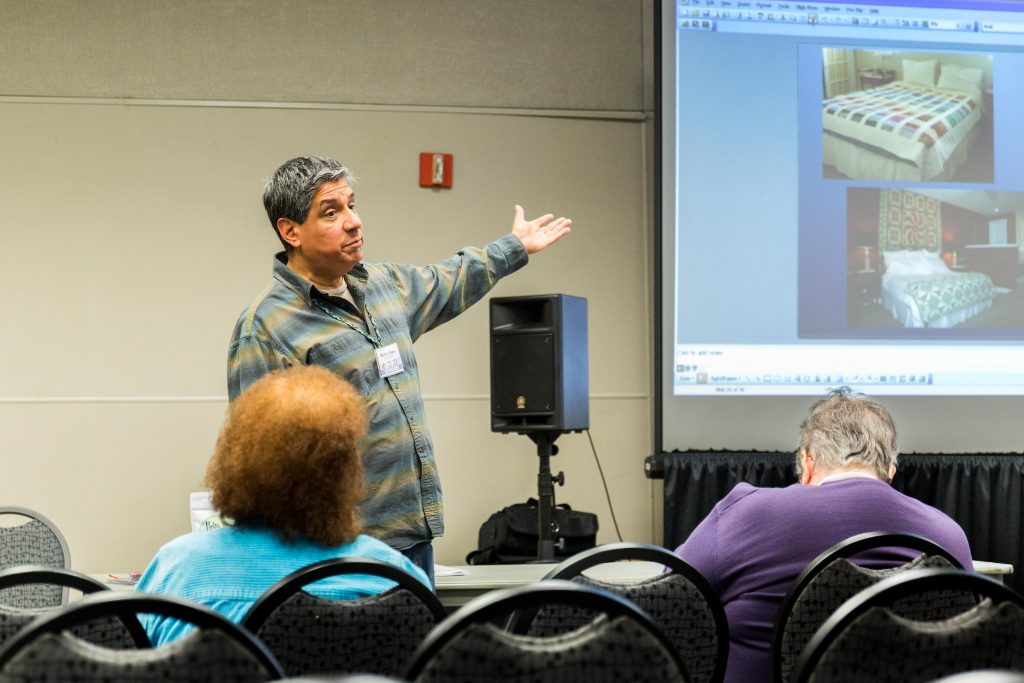 Photo by Brian Roberts Photography[/caption]
Photo by Brian Roberts Photography[/caption]
After all the time and care put in to making a quilt, don’t risk its lasting value by not taking care of it properly. These simple reminders will go a long way in protecting the quality of your quilt.
]]>Learning A Vanishing Art
Thursday, February 9th, 2017The Egyptian Tentmakers were once again a huge hit at Road 2017.
Not only were guests able to watch the tentmakers in action on the exhibit hall floor,
some guests were also able to learn and practice their vanishing art in several classes taught by Jenny Bowker and assisted by the tentmakers, Hosam Hanafy and Tarek Abdelhay.
Jenny explained to the students that in Egypt, it is mostly middle class men who have learned and replicate this ancient method of appliqueing. They gather in small groups in work rooms as a social activity. One man will work on one piece until it is completed. They don’t get paid until the piece is sold. Because of cultural norms, it is difficult for women to learn this trade. Women and men are forbidden to congregate together in public so women cannot work in the shops alongside the men to learn and practice the appliqueing. And since men are the primary instructors, the only way for women to learn these skills, is if they have a husband, father, or brother teach them. Women’s contributions are less public but their skills are just as much needed and appreciated. Women gather in groups in homes to sew. One such group of 10 women are hired by Hosam to help fill his orders. Hosam gives the women a monthly allowance to help them get by in providing for their families until their quilts are sold. Selling one quilt will feed these women and their families for up to 5 months. That is why supporting these women is so important. Maria Canela was one of the students in Jenny’s Tentmaker Applique classes. Maria is from Cuernavaca, Moielos, Mexico – a city about one hour from Mexico City. She came with four friends from Mexico to attend Road 2017 and take classes. Maria has been quilting for 15 years and participates in a weekly quilting group. She signed up for the class because she loves to sew and loves history. “The history of Egypt amazes me,” remarked Maria. She enjoyed not only learning this method of applique but also hearing Jenny, Tarek and Hosam share the history and current status of the tentmakers.
After the three days of classes, the tentmakers moved to the exhibit hall floor where they demonstrated their skills during the show, thanks to a sponsorship by Pollard’s Sew Creative, . In addition, guests were able to purchase some of their quilts. Part of the money Hosam and Tarek received went back to Egypt to assist the women quilters there.
Road to California was pleased at the response of support by guests for the tentmakers and were honored to present such a unique opportunity to the worldwide community of quilters.
Meet Latifah Saafir And Modern Quilting
Wednesday, February 1st, 2017 Latifah Saafir, modern quilter, pattern designer, and founder of the Modern Quilt Guild.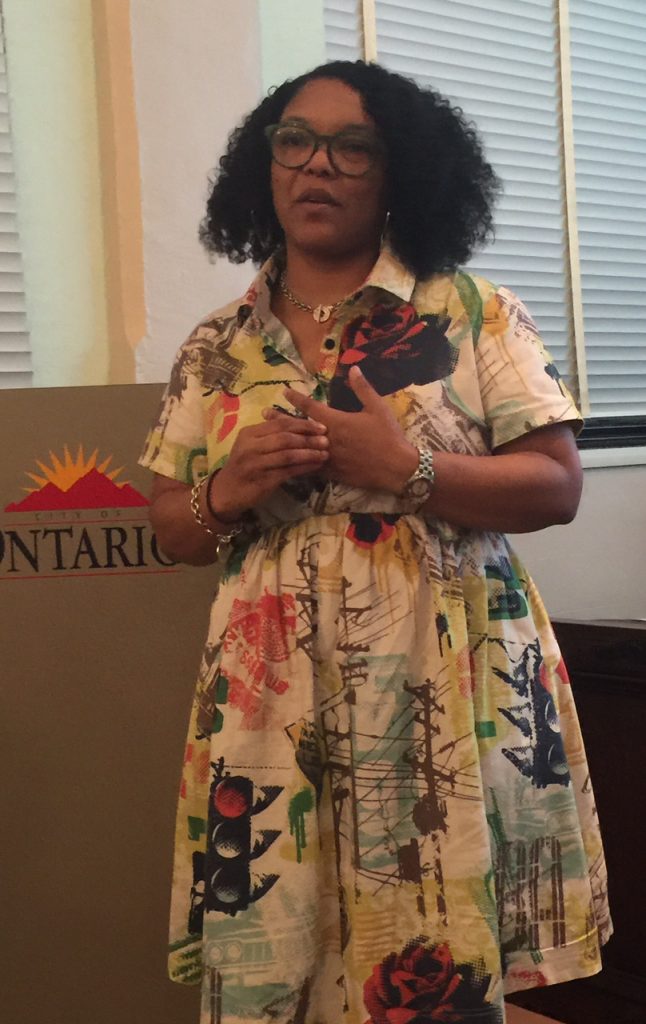 Her special presentation was held Tuesday evening, January 17th at the Ontario Museum of History and Art in conjunction with the exhibit being held there, Modern Quilts Redesigning Traditions.
Her special presentation was held Tuesday evening, January 17th at the Ontario Museum of History and Art in conjunction with the exhibit being held there, Modern Quilts Redesigning Traditions.  The lecture began with Latifah giving a brief history on how the modern quilting movement began in 1998 when it became “cool” to use solid fabrics again. Quilters Gwen Marston and Nancy Crow
The lecture began with Latifah giving a brief history on how the modern quilting movement began in 1998 when it became “cool” to use solid fabrics again. Quilters Gwen Marston and Nancy Crow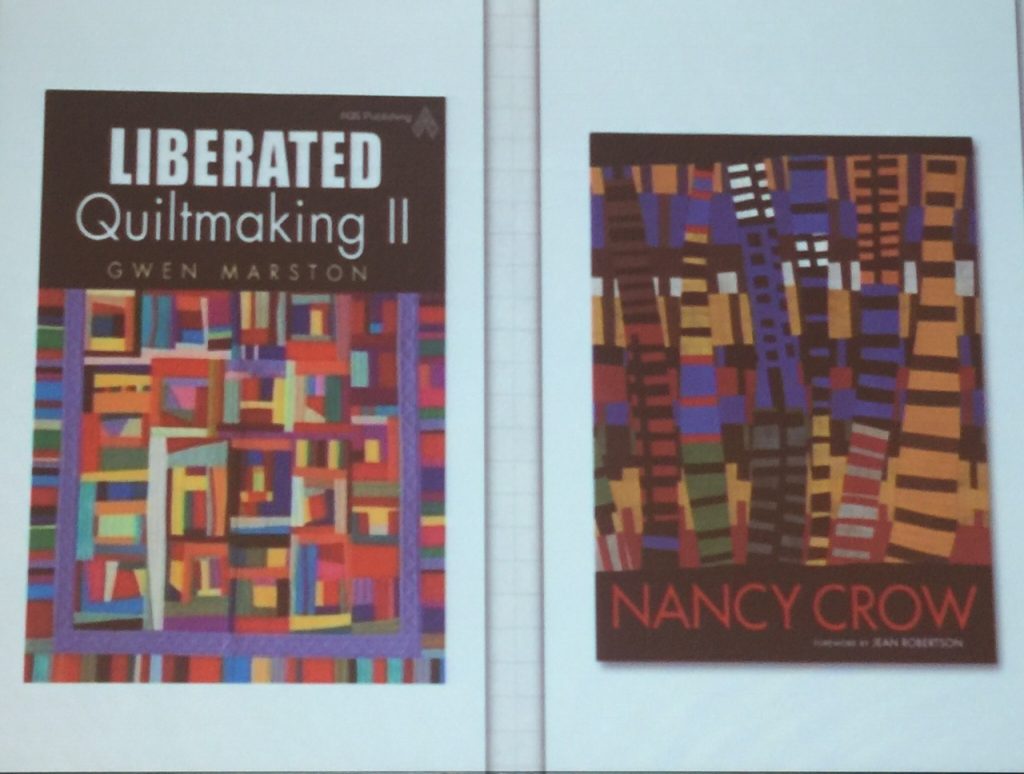 along with the Quilters of Gee’s Bend and Yoshiko Jinzenji,
along with the Quilters of Gee’s Bend and Yoshiko Jinzenji,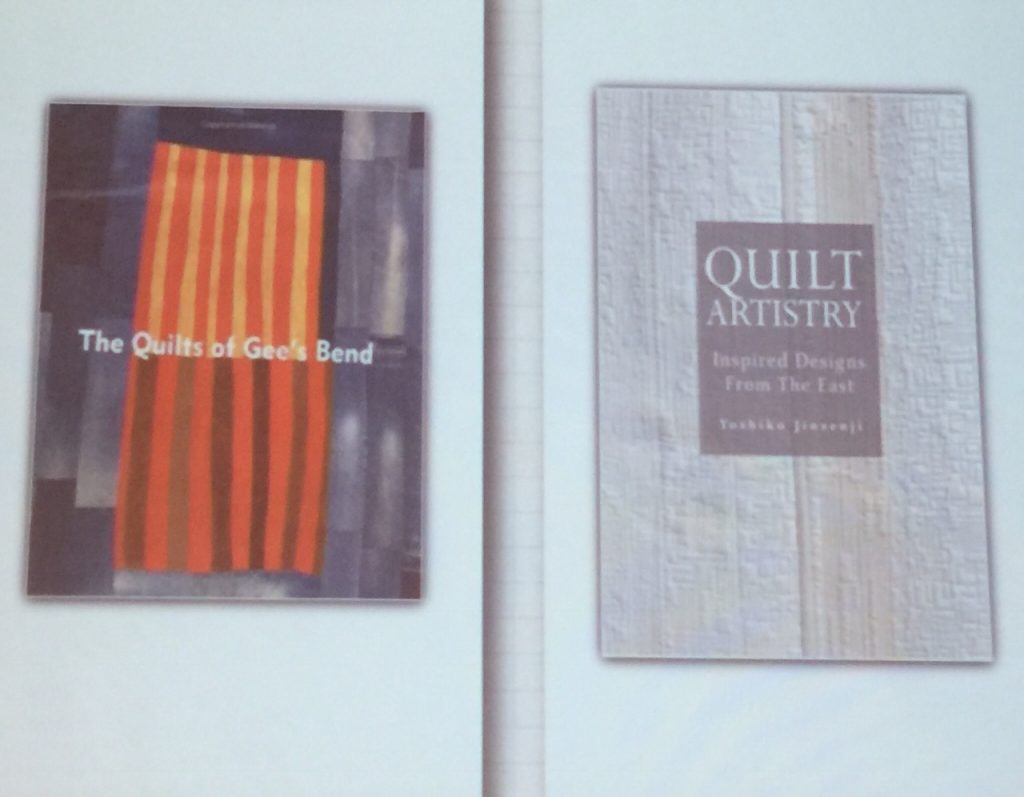 were some of the artists that championed the return to using solid fabrics. The first modern quilt book was published by Weeks Ringle and her husband Bill Kerr also around 1998.
were some of the artists that championed the return to using solid fabrics. The first modern quilt book was published by Weeks Ringle and her husband Bill Kerr also around 1998. Latifah shared that she “always loved quilts.” While she learned how to quilt from her mother when she was 6 years old, when Latifah got her first sewing machine at age 10, she sewed mostly garments. At age 15, she checked out quilting books from the library. Their designs were basically the traditional, Amish quilt kind. In 2008, Latifah saw her first modern quilt and said to herself, “I can do this.”
About the same time Latifah made her first modern quilt, the modern quilting community was also getting started. First, an informal Flickr Group was formed in 2008 to share digital images of the work being created by modern quilters. It was an instant hit among younger quilters. Then, after the Long Beach Quilt Show in 2009, Latifah started the Los Angeles Modern Quilt Guild with 25 members.
Latifah shared that she “always loved quilts.” While she learned how to quilt from her mother when she was 6 years old, when Latifah got her first sewing machine at age 10, she sewed mostly garments. At age 15, she checked out quilting books from the library. Their designs were basically the traditional, Amish quilt kind. In 2008, Latifah saw her first modern quilt and said to herself, “I can do this.”
About the same time Latifah made her first modern quilt, the modern quilting community was also getting started. First, an informal Flickr Group was formed in 2008 to share digital images of the work being created by modern quilters. It was an instant hit among younger quilters. Then, after the Long Beach Quilt Show in 2009, Latifah started the Los Angeles Modern Quilt Guild with 25 members.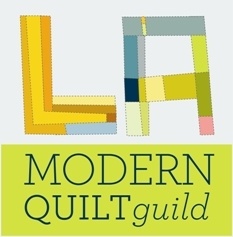 Other areas around the world wanted to duplicate what the LAMQG started and today there are over 100 guilds worldwide.
It’s been almost 10 years since the modern quilting movement began. When asked where does Latifah see the future of modern quilting going, she replied, “Who knows–!!” One thing is for sure: the interest and skill level in modern quilting continues to increase.
Jan has been a modern quilter for 7 years and belongs to the Temecula Valley Modern Quilt Guild. She was attracted to modern quilting because it is “non-judgmental.” She is self-taught, doesn’t use a pattern and just “figures things out.”
[caption id="attachment_4666" align="aligncenter" width="625"]
Other areas around the world wanted to duplicate what the LAMQG started and today there are over 100 guilds worldwide.
It’s been almost 10 years since the modern quilting movement began. When asked where does Latifah see the future of modern quilting going, she replied, “Who knows–!!” One thing is for sure: the interest and skill level in modern quilting continues to increase.
Jan has been a modern quilter for 7 years and belongs to the Temecula Valley Modern Quilt Guild. She was attracted to modern quilting because it is “non-judgmental.” She is self-taught, doesn’t use a pattern and just “figures things out.”
[caption id="attachment_4666" align="aligncenter" width="625"]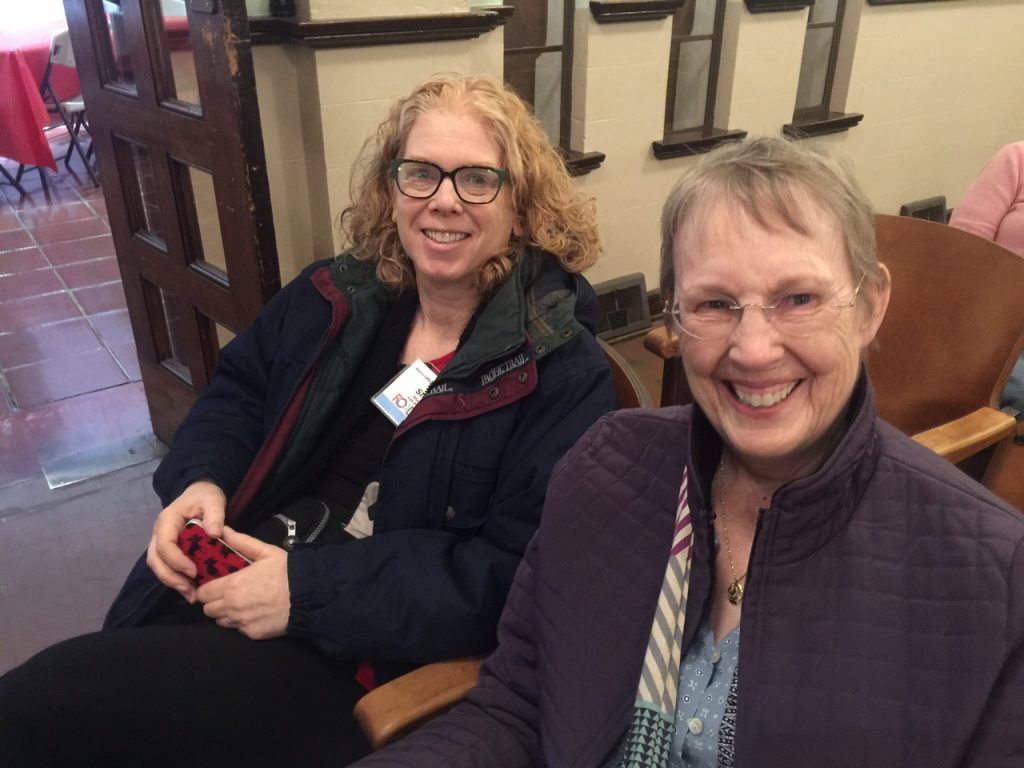 (ltor) Sharon and Jan[/caption]
Sharon came from Los Angeles and has been quilting just 6 months. She takes classes with Jan. She started quilting after she retired from nursing and has made one baby quilt. She heard about the lecture through Road’s social media and was interested in learning more about modern quilting.
(ltor) Sharon and Jan[/caption]
Sharon came from Los Angeles and has been quilting just 6 months. She takes classes with Jan. She started quilting after she retired from nursing and has made one baby quilt. She heard about the lecture through Road’s social media and was interested in learning more about modern quilting.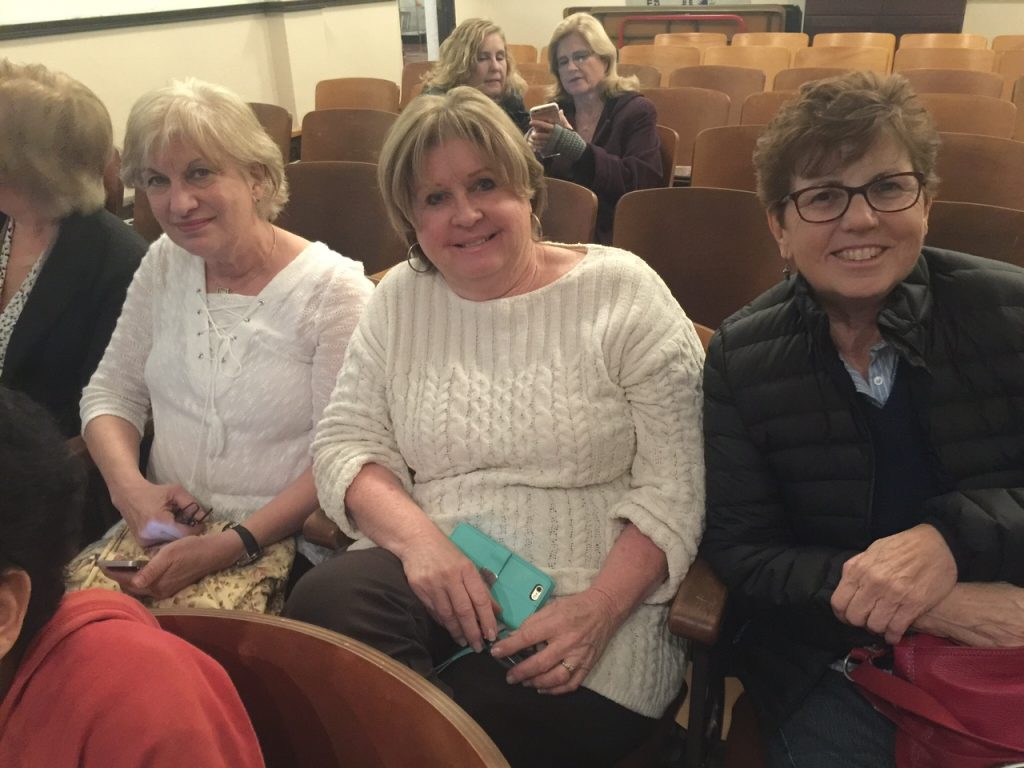 Debbie, Maria, and Pat all belong to the Inland Empire Modern Quilt Guild. The guild was started in September 2016 by a group of friends and now has 20 members. They came to the lecture and trunk show because they are big fans of Latifah.
Even long-time quilters are turning to modern quilting. Denise lives in Orange County, California and has been quilting for over 30 years. She considered herself a “traditional, Quilt-in-a-Day quilter” and fell into modern quilting because she wanted to do something “different, new, refreshing and colorful.”
[caption id="attachment_4676" align="aligncenter" width="625"]
Debbie, Maria, and Pat all belong to the Inland Empire Modern Quilt Guild. The guild was started in September 2016 by a group of friends and now has 20 members. They came to the lecture and trunk show because they are big fans of Latifah.
Even long-time quilters are turning to modern quilting. Denise lives in Orange County, California and has been quilting for over 30 years. She considered herself a “traditional, Quilt-in-a-Day quilter” and fell into modern quilting because she wanted to do something “different, new, refreshing and colorful.”
[caption id="attachment_4676" align="aligncenter" width="625"]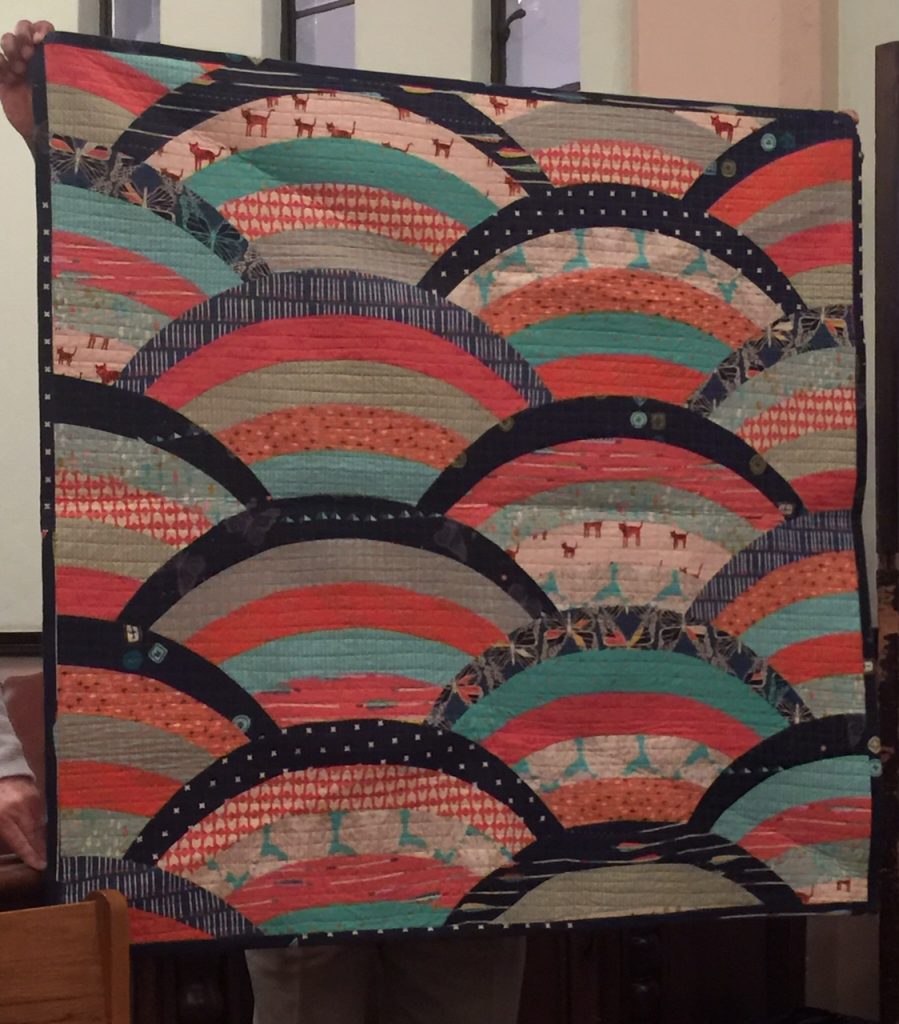 Latifah’s signature “Glam Clam”– clam shells blown up.[/caption]
Latifah hopes modern quilting will continue to inspire quilters to take ownership for their work and most of all, that it will inspire a new generation of young sewers.]]>
Latifah’s signature “Glam Clam”– clam shells blown up.[/caption]
Latifah hopes modern quilting will continue to inspire quilters to take ownership for their work and most of all, that it will inspire a new generation of young sewers.]]>
Road 2017 Teacher and Vendor: Meet LauraJane White
Thursday, January 12th, 2017 5066C and Saturday 6061C
[caption id="attachment_4605" align="aligncenter" width="421"]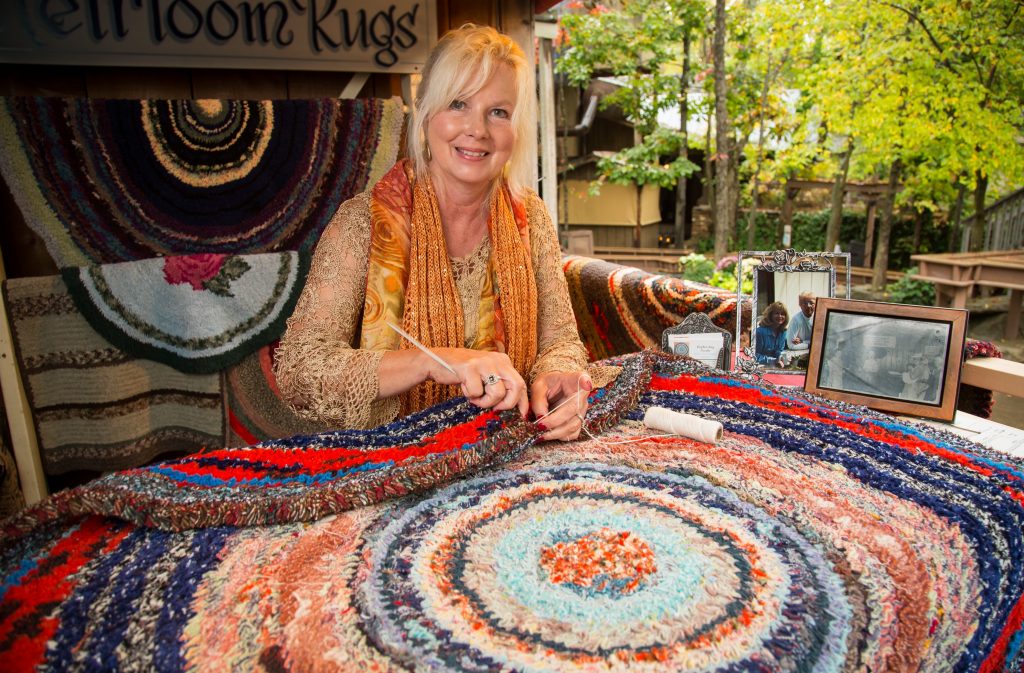 Laura White crochets rugs at the Silver Dollar City National Harvest & Cowboy Festival.[/caption]
Road to California 2017 is offering several “non-quilting” classes and one of those will be LauraJane White’s Pleachét classes. Pleachét is a technique used to build heirloom rugs from strips of old or new fabric. The fabric is loaded onto a needle — RugBeeRugNeedle TM — and crocheted back off with carpet warp, leaving the material standing on edge to create plush rugs, chair pads and trivets.
Laura White crochets rugs at the Silver Dollar City National Harvest & Cowboy Festival.[/caption]
Road to California 2017 is offering several “non-quilting” classes and one of those will be LauraJane White’s Pleachét classes. Pleachét is a technique used to build heirloom rugs from strips of old or new fabric. The fabric is loaded onto a needle — RugBeeRugNeedle TM — and crocheted back off with carpet warp, leaving the material standing on edge to create plush rugs, chair pads and trivets.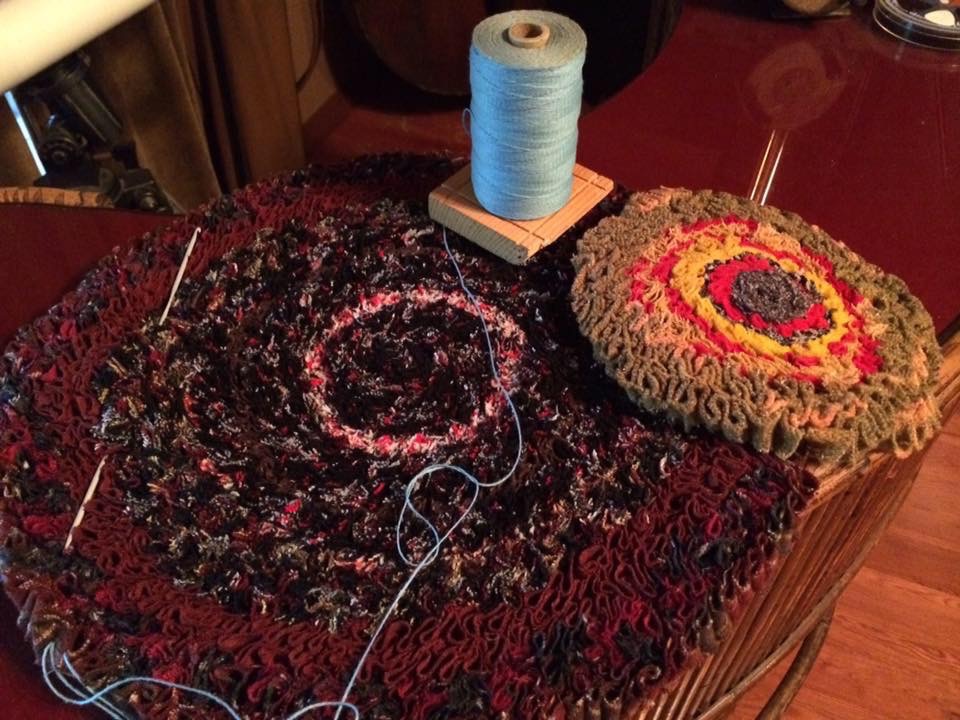 The Pleachét process and the needle that is used, were designed by LauraJane’s grandmother, Laura Elizabeth Johnston. Her grandmother used it to carpet the family farmhouse, wall to wall, in Windsor, Missouri around the turn of the 19th Century.
[caption id="attachment_4606" align="aligncenter" width="459"]
The Pleachét process and the needle that is used, were designed by LauraJane’s grandmother, Laura Elizabeth Johnston. Her grandmother used it to carpet the family farmhouse, wall to wall, in Windsor, Missouri around the turn of the 19th Century.
[caption id="attachment_4606" align="aligncenter" width="459"]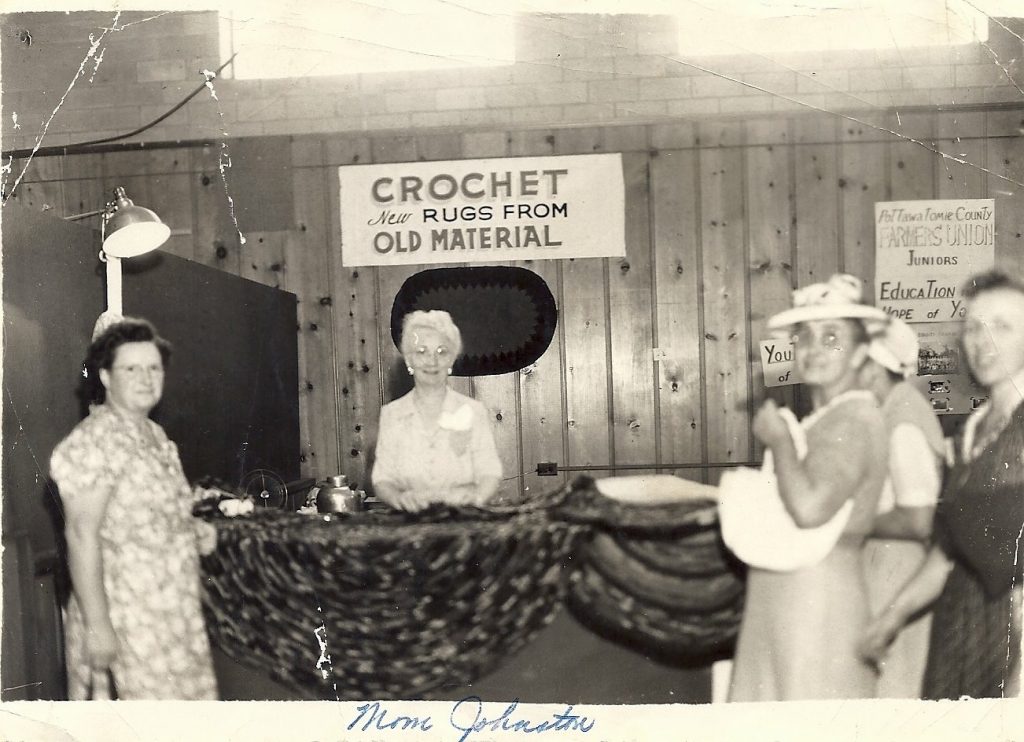 LauraJane’s grandmother, Elizabeth Johnston, at a craft show in the early 30’s/40’s in the midwest[/caption]
LauraJane remembers her grandmother dying her own wool strips and crocheting rugs, but is was LauraJane’s sister, Shirley Wood, who taught LauraJane the process. Shirley and LauraJane worked side-by-side for many years at the 1880’s themed craft park, “Silver Dollar City,” teaching and making their beautiful rugs.
The Pleachét Booth will be located at 2H in the Exhibit Hall and will feature the many styles of Pleachét from round, rectangle, and oval rugs to chair pads and trivets in both floral and geometric designs. Pleachét tools will also be available. LauraJane enjoys interacting with her customers, sharing her family legacy and demonstrating a primitive craft that much of the world has never seen.
LauraJane’s grandmother, Elizabeth Johnston, at a craft show in the early 30’s/40’s in the midwest[/caption]
LauraJane remembers her grandmother dying her own wool strips and crocheting rugs, but is was LauraJane’s sister, Shirley Wood, who taught LauraJane the process. Shirley and LauraJane worked side-by-side for many years at the 1880’s themed craft park, “Silver Dollar City,” teaching and making their beautiful rugs.
The Pleachét Booth will be located at 2H in the Exhibit Hall and will feature the many styles of Pleachét from round, rectangle, and oval rugs to chair pads and trivets in both floral and geometric designs. Pleachét tools will also be available. LauraJane enjoys interacting with her customers, sharing her family legacy and demonstrating a primitive craft that much of the world has never seen.  In her classes, LauraJane will help her students create their own family heirlooms utilizing the Six Easy Steps of Pleachét:
In her classes, LauraJane will help her students create their own family heirlooms utilizing the Six Easy Steps of Pleachét:
*Choosing fabric and it’s preparation is key.
*Cutting appropriate width-size determining what your
project will become.
*Proper loading of the fabric onto the rug needle to insure the
neatness of your rug.
*Starting with the simplest of crochet stitches a chain stitch
thus determining the shape of your project.
*Building the art work, one row at a time.
*Learning to finish your edges properly.
LauraJane hopes her students will learn “to embrace the importance of keeping the primitive arts alive in an all too disposable minded society” by discovering a new outlet to express their personal creativity in a one-of-a-kind, work of art.
This will be LauraJane’s first time at Road to California. She said she has heard that Road “is the creme de la creme of fiber art festivals” and that she is “so looking forward to this show.”
To learn more about LauraJane and the Pleachét technique, please visit her web site.
]]>Road 2017 Faculty: Meet Linda Matteotti
Friday, December 30th, 2016Linda Matteotti will be teaching two stand up, longarm classes :
Monday: 1015C Begin with a Stencil 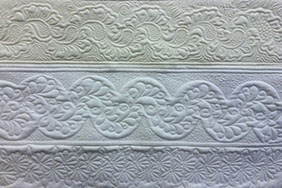
Tuesday: 2016C Simple but Amazing Projects on a Long Arm 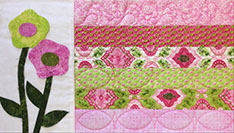
Four hands on, computer design classes:
Wednesday: 3007C Mastering Electric Quilt Level 1 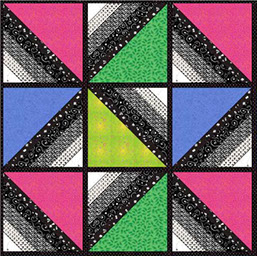
Thursday: 4007C Mastering Electric Quilt Level 2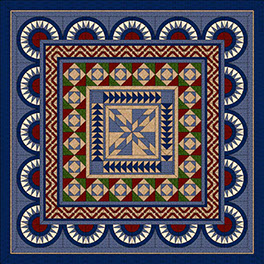
Friday: 5007C Electric Quilt – Foundation and Appliqué Patterns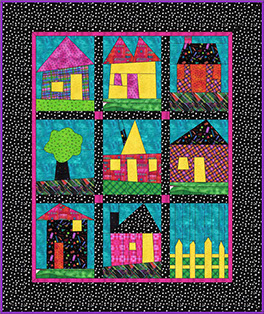
Saturday: 6006C Art & Stitch for Longarm Digitizing 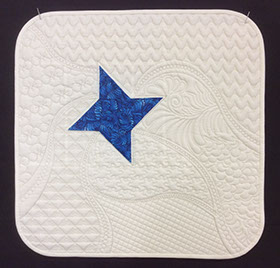
And a half-morning drawing class:
Sunday: 7006C Zentangle Drawing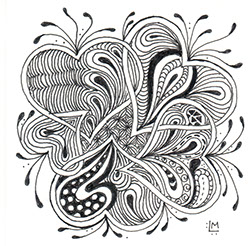
A resident of Tempe, Arizona, Linda Matteotti is a versatile and qualified teacher. She is a Handi Quilter Longarm Educator, an Art Stitch Certified Teacher, an Electric Quilt and EQStitch Instructor, and a Certified Zentangle Teacher (CZT). Besides Road to California, Linda has also taught as far away as Australia and South Africa. When she’s not quilting, Linda does Zentangle drawing and book folding. 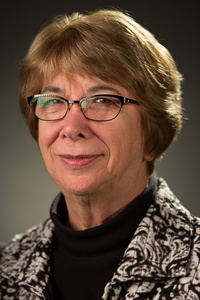
How did Linda get started in longarm quilting? “I was not having much success with machine quilting on my domestic machine, so I decided to try free motion on a longarm. After achieving success on that, I am now able to quilt on a domestic machine or sit-down longarm with great results. After purchasing my Handi Quilter longarm in 2008, I became an Educator for them and have enjoyed teaching all over the world.”
Inspiration for Linda’s designs comes from “absolutely everywhere.” She thinks Pinterest is a “most amazing resource.” Some of her work has been quilting her mother’s beautiful embroidery creations.
What is the one quilting tool that Linda cannot live without? “Electric Quilt (EQ7). I never make a quilt without it. Regardless of whether I’m piecing by machine or hand, applique or whole cloth. Every quilt I make begins it’s life as a layout in Electric Quilt.”
Linda’s favorite aspect of teaching is “watching the “lights go on” with her students, Her favorite moment is when she hears “that was worth the price of admission,” at the end of a class. Linda also hopes her students gain the ability to be independent with their quilting and designing. 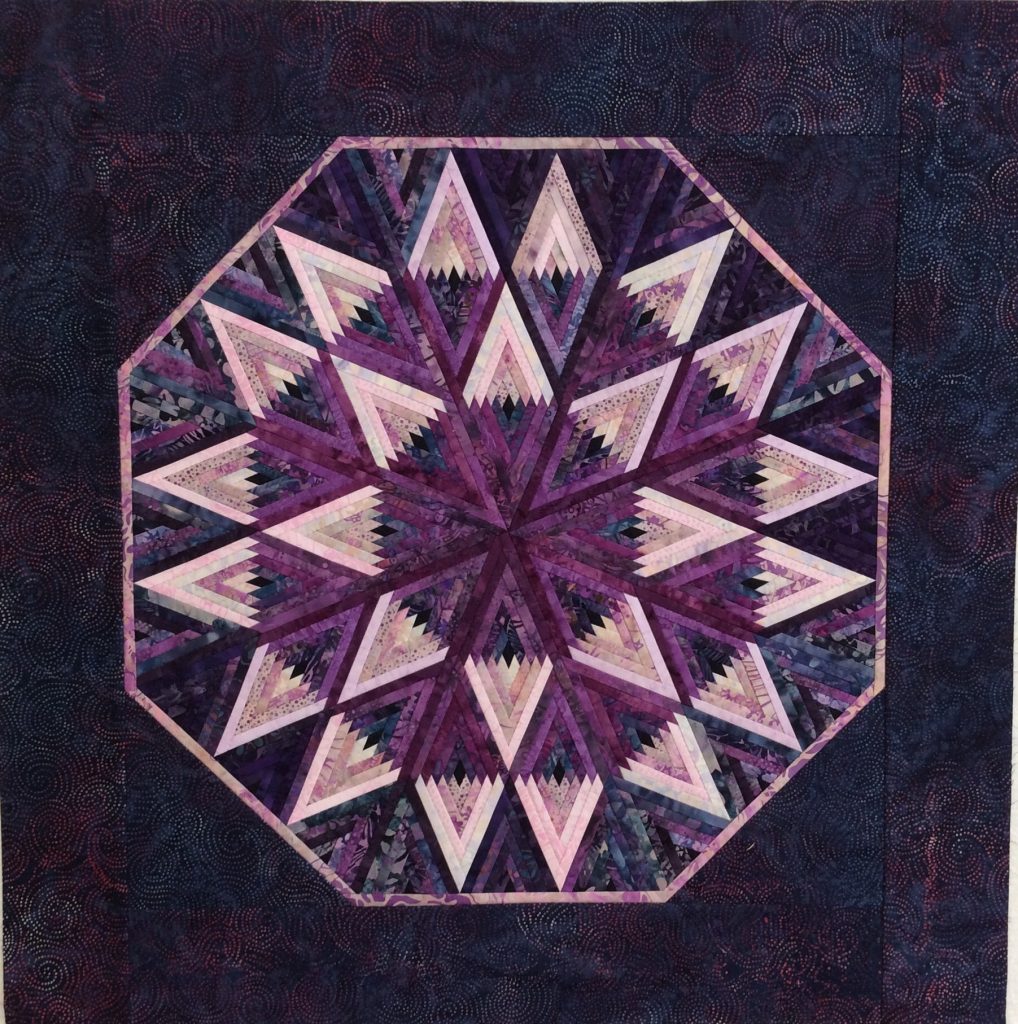
What is Linda’s best quilting tip? “There are no “always” or “nevers” in your quilting journey. Explore different techniques and adopt the ones that work for you.”
You can learn more about Linda on her website.
]]>Meet Road 2017 Vendor and Teacher: Janna Thomas
Friday, December 23rd, 2016 Bloc Loc Rulers. Janna’s mom came with duct tape stuck to a ruler because she was tired of the rocking and slipping. Janna’s husband, Paul, being Mr. Fixit, took the ruler out to the garage and filed a groove in it. At this point the Thomas’ knew that they had to start their business. It took a couple of years to get their seed money to start things up and their company began selling rulers in 2009.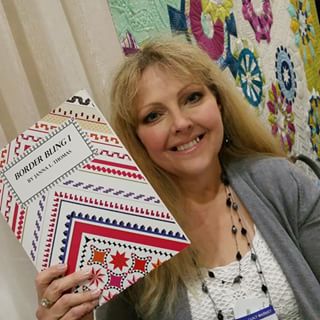 Janna and Paul live and run their business in Loveland, Colorado. Janna says that people might think that when she’s not running the business with Paul, there would be other things that she would like to be doing. But she insists that she “absolutely love(s) quilting and “ and isn’t interested in doing anything else. Janna keeps thinking “that when I’m an old woman I’ll try to take in some knitting and gardening, but honestly, I know there’s no room for that..quilting is too much of an obsession.”
What does Janna like most about her business? “I love seeing the happiness quilters have when they use our rulers because their projects turn out better than the way they’d hoped. The most wonderful thing is, they will come up to us at shows and show me photos and talk about how Bloc Loc has made their quilting an absolute joy.
Janna and Paul live and run their business in Loveland, Colorado. Janna says that people might think that when she’s not running the business with Paul, there would be other things that she would like to be doing. But she insists that she “absolutely love(s) quilting and “ and isn’t interested in doing anything else. Janna keeps thinking “that when I’m an old woman I’ll try to take in some knitting and gardening, but honestly, I know there’s no room for that..quilting is too much of an obsession.”
What does Janna like most about her business? “I love seeing the happiness quilters have when they use our rulers because their projects turn out better than the way they’d hoped. The most wonderful thing is, they will come up to us at shows and show me photos and talk about how Bloc Loc has made their quilting an absolute joy. The Bloc Loc Rulers vendor booth will be featuring a new ruler, the Pineapple Ruler. It gives the quilter two strip width options, any size center for the square in a square, any pineapple block size and rulers can be combined for special effects. The Pineapple Ruler is very easy to operate and making the block is very easy. Another new addition in their booth is Bloc Loc’s Traction Tape, a completely non-slip material that quilters can peel and apply to rulers they already own. The most wonderful aspect to Traction Tape is its ability to stay adhered to a ruler for a very long time and can turn up to 8 layers of fabric without a turning mat.
In addition to working the Bloc Loc Rulers booth, Janna will be teaching three classes that incorporate many of the company’s rulers. Janna will be teaching on Monday, 1010C Millefioiri
The Bloc Loc Rulers vendor booth will be featuring a new ruler, the Pineapple Ruler. It gives the quilter two strip width options, any size center for the square in a square, any pineapple block size and rulers can be combined for special effects. The Pineapple Ruler is very easy to operate and making the block is very easy. Another new addition in their booth is Bloc Loc’s Traction Tape, a completely non-slip material that quilters can peel and apply to rulers they already own. The most wonderful aspect to Traction Tape is its ability to stay adhered to a ruler for a very long time and can turn up to 8 layers of fabric without a turning mat.
In addition to working the Bloc Loc Rulers booth, Janna will be teaching three classes that incorporate many of the company’s rulers. Janna will be teaching on Monday, 1010C Millefioiri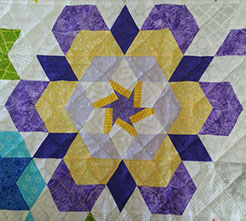 Tuesday, 2014C Blooming Cogwheels
Tuesday, 2014C Blooming Cogwheels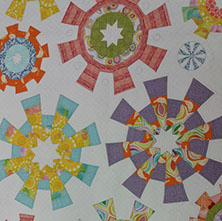 and on Wednesday, 3019C A Tarted Up Pineapple
and on Wednesday, 3019C A Tarted Up Pineapple 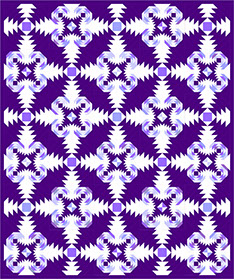 Janna says that she loves “helping students learn in any way possible. Seeing them get excited about doing things they never thought they could do is extremely rewarding.” Janna feels it is important that her students realize they can do anything in quilting; there’s always a way to achieve what they want to do and it doesn’t have to be difficult.
Janna and Paul can’t wait to come to Road to California 2017. They consider Road to be “theworld’s biggest and best quilting bee, filled with friendship, learning and magnificent shopping.’ Whether in the classroom or the demoing in their booth, Janna is always ready to teach how to pull off the best techniques at the right time, and how to set her customers up for success in every quilting situation
To learn more about Bloc Loc Rulers, please visit their web site.
]]>
Janna says that she loves “helping students learn in any way possible. Seeing them get excited about doing things they never thought they could do is extremely rewarding.” Janna feels it is important that her students realize they can do anything in quilting; there’s always a way to achieve what they want to do and it doesn’t have to be difficult.
Janna and Paul can’t wait to come to Road to California 2017. They consider Road to be “theworld’s biggest and best quilting bee, filled with friendship, learning and magnificent shopping.’ Whether in the classroom or the demoing in their booth, Janna is always ready to teach how to pull off the best techniques at the right time, and how to set her customers up for success in every quilting situation
To learn more about Bloc Loc Rulers, please visit their web site.
]]>
Meet Road 2017 Faculty And Vendor: Jessica VanDenburgh
Saturday, November 19th, 2016 4561C Stitch Sling Bag and on Saturday night, 6065C Diva Wallet
and on Saturday night, 6065C Diva Wallet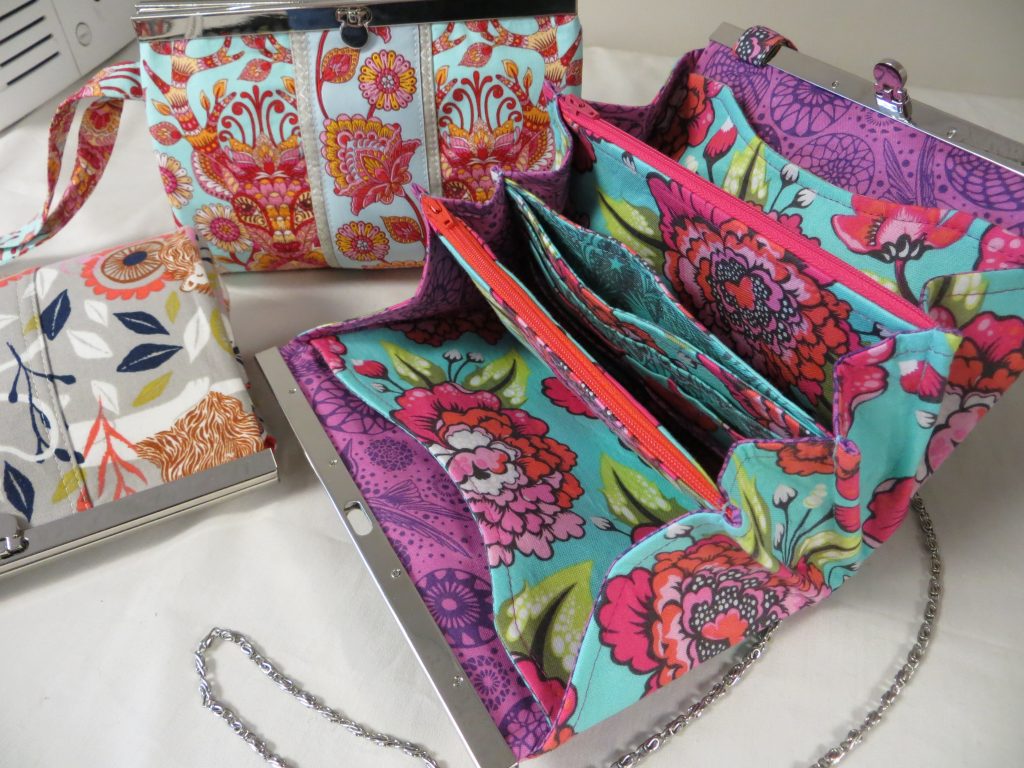 This native New Yorker, Jessica VanDenburgh of Sew Many Creations, has always loved to sew and discovered quilting about 10 years ago. She started making bags around the same time using her quilting fabric and tools. Her friends and family loved the bags she made so much that she began selling them as a small side business. Within a few years, the business grew so much that Jessica couldn’t keep up with the demand. She decided to try selling the patterns instead of the finished bags. According to Jessica, “it was a wonderful switch, much more rewarding and less stressful.” A couple years later, she designed her first quilt pattern and the rest “as they say is history.”
This native New Yorker, Jessica VanDenburgh of Sew Many Creations, has always loved to sew and discovered quilting about 10 years ago. She started making bags around the same time using her quilting fabric and tools. Her friends and family loved the bags she made so much that she began selling them as a small side business. Within a few years, the business grew so much that Jessica couldn’t keep up with the demand. She decided to try selling the patterns instead of the finished bags. According to Jessica, “it was a wonderful switch, much more rewarding and less stressful.” A couple years later, she designed her first quilt pattern and the rest “as they say is history.”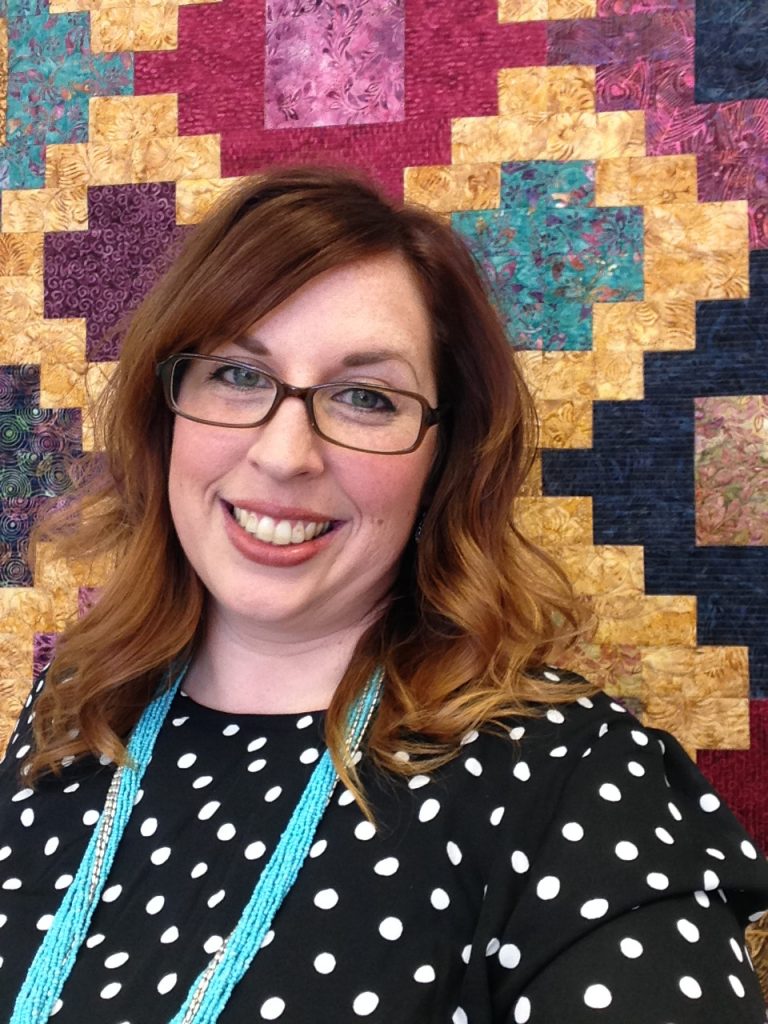 What does Jessica like most about her business, Sew Many Creations? “The fabric! I just can’t get enough!” Jessica is inspired to design more patterns because of the beautiful fabrics available. She loves how fabric speaks to her and tells her what to make it into.
Jessica “absolutely” loves to teach. To her, “there’s no better feeling than to see someone accomplish something they didn’t think they could do and know that you helped them do it.” Bags are Jessica’s favorite because they tend to have a reputation of being difficult but she breaks it down into easy steps. The Stella Sling bag is the perfect purse size with lots of pockets and includes Jessica’s favorite – a recessed zipper. The Prima Diva wallet also has lots of pockets and a beautiful metal frame closure.
Jessica hopes her students learn that bags are not as hard as they might have thought. They should be prepared: Jessica likes to have fun and laugh a lot during class. And she gives lots of tips and tricks.
In addition to teaching her classes, Jessica and Sew Many Creations will have a vendor booth featuring lots of patterns, purse hardware, fat quarters, 1 yard cuts and bag kits.
What does Jessica like most about her business, Sew Many Creations? “The fabric! I just can’t get enough!” Jessica is inspired to design more patterns because of the beautiful fabrics available. She loves how fabric speaks to her and tells her what to make it into.
Jessica “absolutely” loves to teach. To her, “there’s no better feeling than to see someone accomplish something they didn’t think they could do and know that you helped them do it.” Bags are Jessica’s favorite because they tend to have a reputation of being difficult but she breaks it down into easy steps. The Stella Sling bag is the perfect purse size with lots of pockets and includes Jessica’s favorite – a recessed zipper. The Prima Diva wallet also has lots of pockets and a beautiful metal frame closure.
Jessica hopes her students learn that bags are not as hard as they might have thought. They should be prepared: Jessica likes to have fun and laugh a lot during class. And she gives lots of tips and tricks.
In addition to teaching her classes, Jessica and Sew Many Creations will have a vendor booth featuring lots of patterns, purse hardware, fat quarters, 1 yard cuts and bag kits. What is Jessica looking forward to when attending her first Road to California? “Meeting lots of new people. That’s always the best part of being at a quilt show.” And to this New Yorker, coming to California in January “sounds pretty good too!”
To learn more about Jessica and Sew Many Creations, follow her on Facebook, Pinterest, or Twitter.]]>
What is Jessica looking forward to when attending her first Road to California? “Meeting lots of new people. That’s always the best part of being at a quilt show.” And to this New Yorker, coming to California in January “sounds pretty good too!”
To learn more about Jessica and Sew Many Creations, follow her on Facebook, Pinterest, or Twitter.]]>
